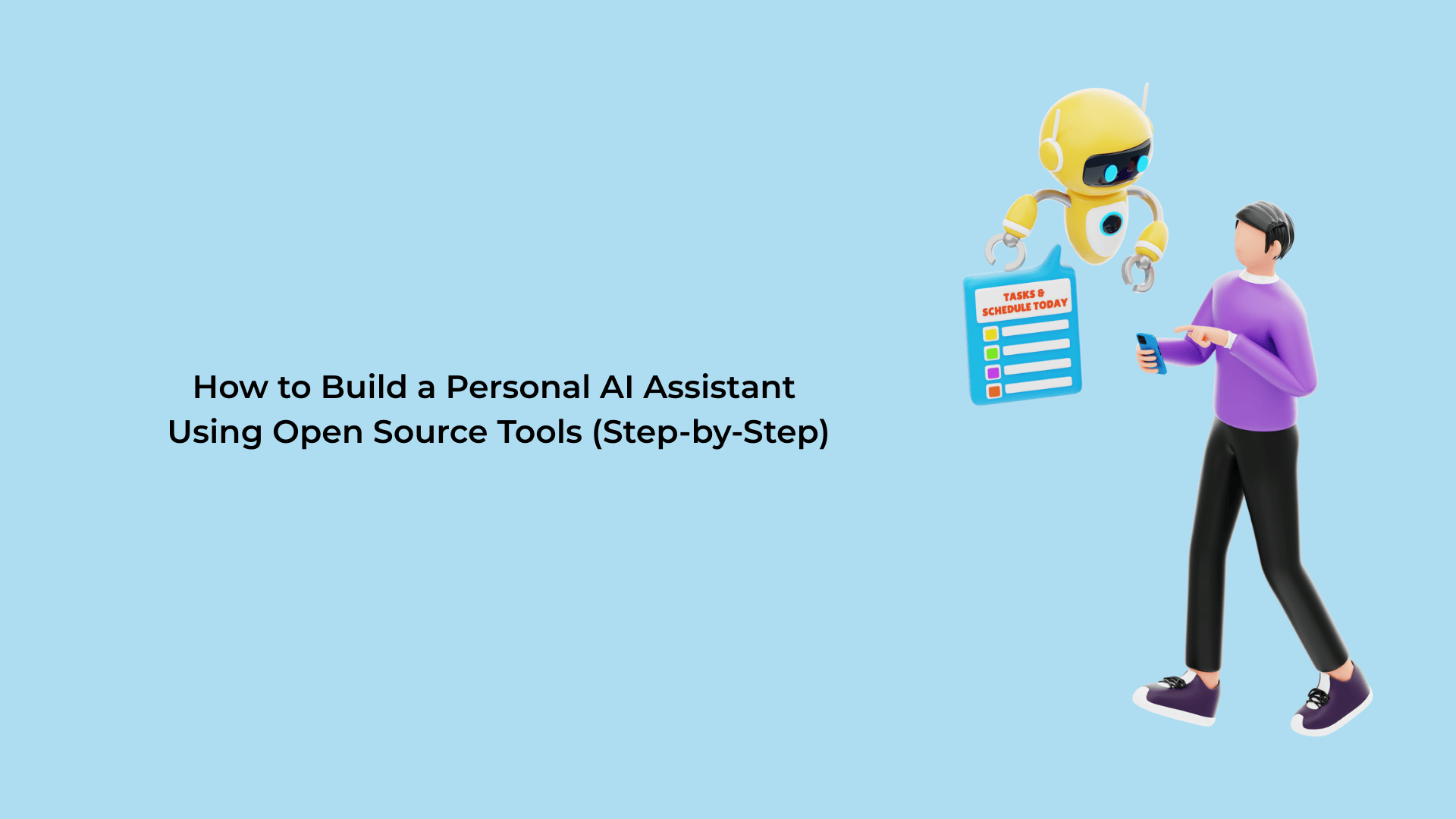With the rapid growth of artificial intelligence, building a personal AI assistant is no longer a futuristic dream. Thanks to open-source tools and frameworks, developers and tech enthusiasts can create custom AI assistants tailored to their needs, without relying on proprietary platforms.
This step-by-step guide walks you through building your AI assistant using open-source technologies.
Why Build Your AI Assistant?
Creating a personal AI assistant offers several advantages:
- Privacy: Your data stays local or within your control.
- Customization: Tailor the assistant to your tasks, habits, and preferences.
- Learning Opportunity: Understand how AI systems work under the hood.
- Cost-Effective: Avoid subscription fees tied to commercial platforms.
Step 1: Define the Core Capabilities
Before writing any code, decide what you want your AI assistant to do. Common features include:
- Voice recognition and synthesis
- Natural language understanding
- Task automation (calendar, email, to-do lists)
- Web search and summarization
- Home automation integration
Choose use cases based on your daily needs.
Step 2: Choose Your Open Source Stack
Here’s a recommended open-source tech stack:
1. Speech Recognition
2. Natural Language Understanding (NLU)
3. Language Generation
4. Voice Output
- Tool: Coqui TTS or Festival TTS
- Use: Convert text back to speech (TTS – Text-to-Speech)
5. Task Automation
- Tool: Python + APIs (Google Calendar, email, smart home systems)
- Use: Automate real-world tasks like sending reminders or controlling devices
Step 3: Build the Pipeline
Here’s how the AI assistant pipeline works:
Voice Input → Speech-to-Text → NLU → LLM Response → Task Execution → Text-to-Speech
Example Pipeline Flow:
- You say: “What’s on my calendar today?”
- Whisper transcribes speech to text.
- Rasa identifies intent (“calendar_check”).
- The Python script pulls events from Google Calendar.
- OpenLLM or GPT4All generates a natural reply.
- Coqui TTS reads it back to you.
Step 4: Integrate Components
Use Python as the glue to connect each part. For instance:
- Run Whisper in real-time to capture voice input.
- Pass the transcribed text to Rasa or a custom NLU script.
- Route the intent and entities to a logic handler.
- Generate dynamic responses using your chosen LLM.
- Use TTS to speak the response back.
You can wrap the assistant in a desktop app or mobile interface or run it on a Raspberry Pi.
Step 5: Add Personalization and Context
To make your assistant smarter:
- Store conversation history for context.
- Learn from user behavior over time.
- Set preferences (e.g., name, location, routine tasks).
- Integrate with APIs like weather, news, finance, or smart home hubs.
Using lightweight databases like SQLite or Redis helps manage persistent data without complexity.
Step 6: Secure and Optimize
Important considerations:
- Run models locally if privacy is a priority.
- Use rate limiting and input filtering to avoid abuse.
- Update models periodically to improve accuracy.
- Keep compute in check—some LLMs are resource-intensive.
Final Thoughts
Building a personal AI assistant with open-source tools is entirely possible—and increasingly powerful. With frameworks like Whisper, Rasa, GPT4All, and Coqui TTS, you can create a fully functional assistant that respects your privacy and adapts to your needs.
Whether you want a simple voice interface or a full virtual co-pilot, the tools are available—and they’re open.

